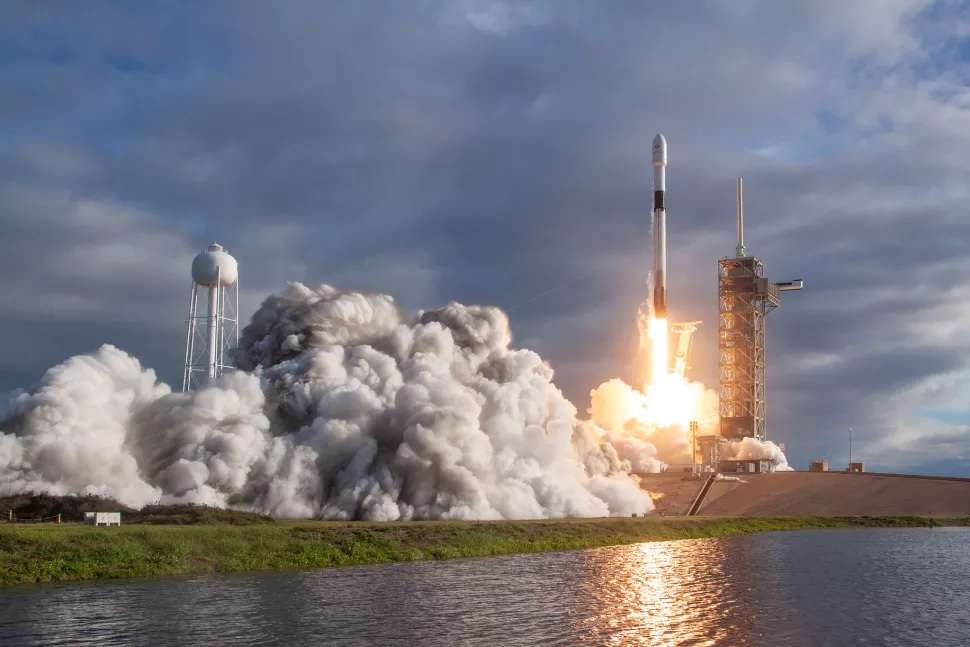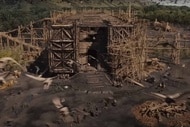Create a free profile to get unlimited access to exclusive videos, sweepstakes, and more!
If a spacecraft launched accidentally, what could we do to abort the mission?

Nickelodeon’s new series The Astronauts follows a group of children who sneak onto an exploratory craft and accidentally initiate the launch sequence. Despite every effort from mission control, they blast off and must grapple with the challenges of space on their own.
Now, NASA and other space agencies hopefully have enough security that a group of kids won't be able to sneak into a ready-to-launch craft. But, if a spacecraft were to launch by mistake, what could people do about it?
ACCIDENTS IN SPACE
It’s no wonder there’s recently been renewed interest in space exploration both in real life and onscreen. While there has been a continuous human presence on the International Space Station for just over 20 years, the past several months have seen a ratcheting up of big milestones and announcements. The Perseverance Rover is now more than halfway to Mars, NASA announced the Artemis program, the agency's next lunar missions, and a NASA and SpaceX partnership restored the United States' crewed launch capability. Just this week, SpaceX’s Crew Dragon capsule launched with a full crew for the first time. As of this writing, the capsule is docking with ISS. All of these exciting activities cause us to wonder about what the future of space exploration might hold.
So far, all of this exciting space action has gone off without incident, but incidents like the Challenger and Columbia shuttle disasters show that accidents can happen — especially since getting to space as we currently understand it means sitting on the top of a giant rocket. Apollo 13 forced us to reconcile with a less fatal but still serious malfunction, and stretch the bounds of our problem-solving ability to return the crew safely home.
Most of our space-faring accidents happened on the ground during training and were non-fatal, with tragic, notable exceptions like the Apollo 1 fire that claimed the lives of three astronauts. What happens, though, if the accident involves a craft on the ground going to space before it's supposed to — or more likely, if a critical issue arises on the way up?
ABORT!
To date, a spacecraft has never launched unintentionally in the way presented in Nickelodeon’s The Astronauts. Before a craft can go to space, let alone carry a human crew, it goes through a rigorous set of certifications to ensure it meets safety requirements. Things can (and do) still go wrong, and it's with that and other scenarios in mind that NASA is developing more sophisticated launch abort systems. NASA’s Orion spacecraft is intended to carry astronauts on deep-space missions, most notably to the Moon as part of the Artemis program.
While developing the craft, NASA included a Launch Abort System (LAS) designed to carry astronauts away from the launch rocket should the need arise. The LAS turns the crew compartment into a self-contained craft, capable of returning the crew to earth by utilizing a system of puller-style thrusters, also known as tractor rockets, in order to outrun the launch rocket. Think of it as similar to an ejector seat on a jet. Once engaged, it sends the crew compartment away from the rocket, to a sufficient distance, then allows the crew to control the descent. The malfunctioning rocket would carry on its way, to wherever the laws of physics demand, while the crew was safely elsewhere.
The LAS could be engaged autonomously in the event that the onboard systems detected a danger to the crew. The system could also be engaged or overridden by onboard crew, allowing them to abort even in a situation where the ship’s systems did not detect any problem or to disengage abort if they determine the risk to be manageable. The Orion LAS is unique in that its thrusters are mounted at the top of the crew capsule, hence the puller-system descriptor. This has the benefit of being lightweight and maneuverable.
Designing the system in this way minimizes the weight when compared to pusher systems located at the bottom of the capsule. Pusher systems, for their part, while being heavier, can be used as additional thrust once in orbit, and are thus beneficial in most mission scenarios. The downside is the additional weight must be subtracted elsewhere, minimizing the amount of cargo that can be launched into orbit.
As commercial partnerships with NASA increasingly become the norm, the organization has levied a challenge to its contractors to design abort systems to accompany their crafts. Instead of dictating exactly how a system must be built, NASA has instead given a set of guidelines the system must be capable of and left the specifics for the individual companies to work out. The essential point is that launch vehicles have been, are, and will be equipped with launch abort systems allowing the crew to detach from their rockets and return to Earth.
This is an important safety measure in the event that something like the tragic shuttle disasters were to ever happen again. And in the context of this article, if a spacecraft were ever to launch unintentionally, through some hardware or software malfunction, the crew would not be doomed to rocket off into space on a runaway ship. Instead, they could simply disengage and return to the ground.
NASA wouldn't have let those kids on The Astronauts get aboard the spacecraft in the first place, but ideally, they would be able to abort the launch and get safely back to Earth, rather than just having to go along for the ride. Uncontrolled ascent into the inky darkness makes for thrilling onscreen storytelling, but here in the real world, that’s the sort of thing we’ve set out to avoid. Space exploration is thrilling enough without adding unnecessary danger into the mix.














